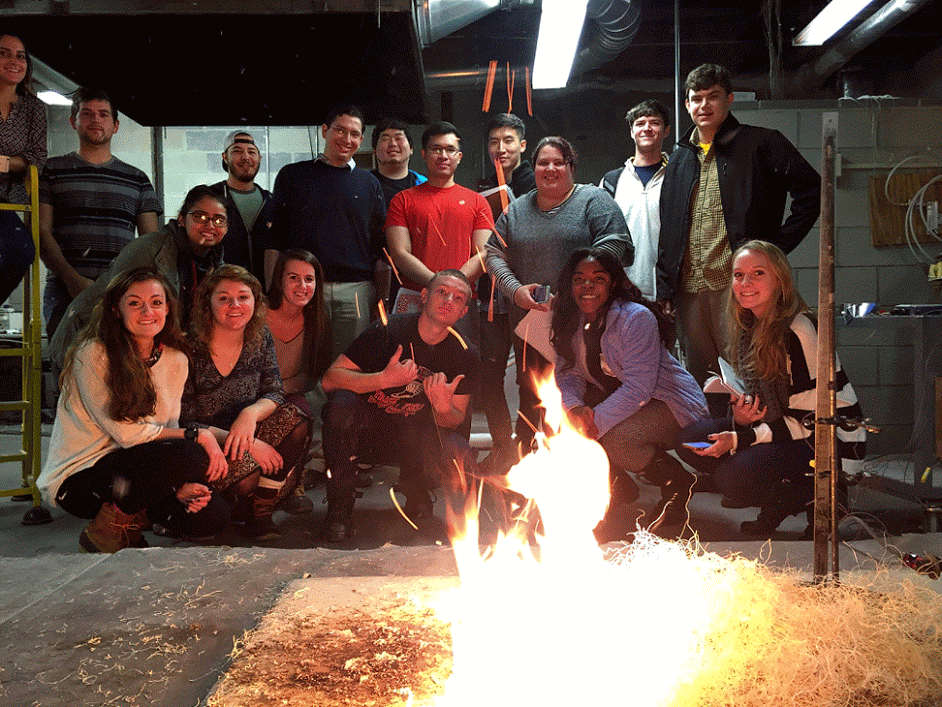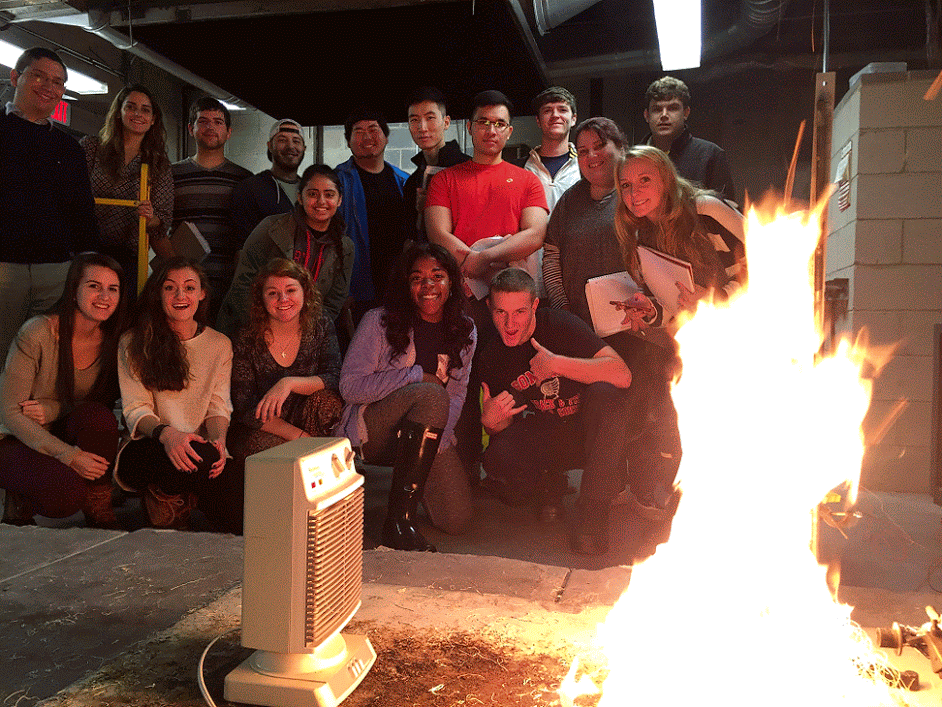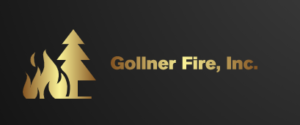Wildland Fire Course Lab Day – Fire Spread
Last week Dr. Gollner’s course, Wildland Fires: Science and Applications got to spend the day in the lab studying how the rate of spread is affected by fuel loading and wind. We used excelsior, just shaved Aspen wood to simulate different fuel loading by changing the density and compaction of the fuel. We found spread rates to increase as the density decreased, but also looked at how heat fluxes varied during spread. It was an interesting exercise because the Rothermel model, the basis of all fire behavior prediction systems in the United States, is based on similar experiments (albeit with a much better wind tunnel in Missoula!).
Two photos below show Harry-Potter Style animated photos of our class posing for pictures during some of the experimental runs in our lab.

Our Wildland Fire course poses for a picture while flames spread from left to right over excelsior. Some small firebrands are visible in the plume.

While we didn’t have a wind tunnel, use of a small fan enabled us to look at how wind changed flame length and heat fluxes to a gauge on the right-hand side of the photo. Obviously, convection significantly increased!
